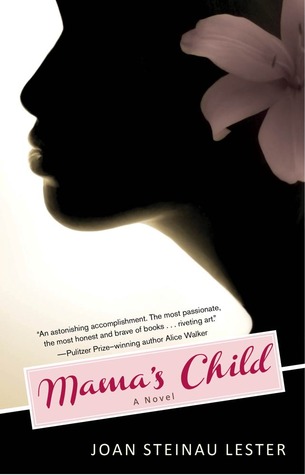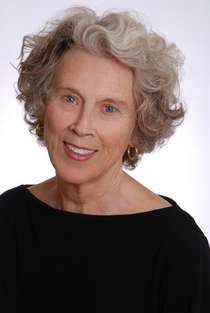 My special guest today, Joan Steinau Lester, recently published her second novel, Mama’s Child. She describes writing as “totally involving, pleasurable, existing only for itself, not the end product. . . . [W]writing is an activity that fully absorbs me. When I finish, I’m flushed with pleasure.”
My special guest today, Joan Steinau Lester, recently published her second novel, Mama’s Child. She describes writing as “totally involving, pleasurable, existing only for itself, not the end product. . . . [W]writing is an activity that fully absorbs me. When I finish, I’m flushed with pleasure.”
Mama’s Child traces the journey of an idealistic young white woman who traveled to the American South as a civil rights worker, fell in love with an African American man, and started a family in San Francisco, a liberal city sure to embrace such a couple — except when it didn’t. Tensions tore their marriage apart when their son and daughter were still young. For Ruby, their biracial daughter, her parents’ divorce further destabilized her already challenged sense of self —- “Am I black or white?” she must ask herself. “Where do I belong?” Is she her father’s daughter alone? As the years pass, the chasm between them widens, even as the mother attempts to hold on to the emotional chord that binds them. It isn’t until Ruby becomes a wife and mother that she begins to
develop compassion and understanding for the many ways that her own mother’s love transcended race and questions of identity.
Hearing Fictional Voices
Creating fictional characters is one of the most mysterious aspects of the enigmatic activity we call creative writing. Here I sit, the author of a novel, imagining beings who have never really lived. Often they are composites of many people I’ve known, fused with bits of my own experience or personality; but ultimately they become their own people, whose voices I hear.
With my new novel, Mama’s Child, I spent the first year drafting the manuscript entirely from the white mother, Elizabeth’s, point of view. (The plot concerns a longstanding conflict with her biracial daughter, Ruby.) But after I completed that first draft I began to hear an urgent voice: it was Ruby’s. “White women always take up all the space, getting their side of every story into print. Women of color don’t have the same kind of access. I want to tell my own story!” I know it sounds strange to say that I “heard” a voice, and in fact I did not literally have an auditory sensation, but the words ran through my mind, then into my fingers, and flowed onto the page. As I wrote Ruby’s chapters, alternating with Elizabeth’s, I understood that indeed she was right: the dramatic tension in the novel comes, at least partly, from reading two very different perspectives on the same events. Ultimately the entire last seventy-five pages are given over to Ruby’s first-person voice.
The characters in my books do take on their own personalities and reality to the extent that, when I finally finish my last revision and turn in the manuscript, I miss my people terribly. We’ve lived in intimacy (yes, I’m the sort of writer who wakes in the middle of the night thinking, “Ruby wouldn’t do that, she’d do this,” and jot a note). We’ve taken a journey together, and once it’s complete, saying Good-bye is like saying farewell to folks who’ve worked on a project or campaign together: we’ve shared a closeness, confidences, and an intensity. I have great affection for these people. It’s hard to close the curtain and exit the stage. Yet despite leaving, my characters live on forever in my imagination, and hopefully in the minds of my readers too.
Meet Joan

Women’s Heritage Museum and Mama’s Child was a Bellwether Prize finalist.
A third novel in progress, Langston Hughes and the One True Me, will be published in 2014.
After receiving her doctorate in multicultural education, Dr. Lester served as the Executive Director of the Equity Institute, which
pioneered the diversity wave of the ’80s and ’90s, for sixteen years.
As a member of a biracial family, Lester’s lifelong passion has been writing about issues of racial identity. Her former husband and father of her children was black; she has been with a female partner/spouse for over thirty years. Lester’s writing has appeared in many newspapers and magazines, including Essence, Los Angeles Times, Chicago Tribune, San Francisco Chronicle, Huffington Post, and Cosmopolitan. She lives in Northern California.
Connect with Joan at her website. She loves to hear from readers!



5 Comments
MAMA’S CHILD looks like such an amazing read. A truly fascinating subject matter. Yes please!!
I don’t think I’ve ever read a book about biracial issues. This story sounds interesting and informative–especially since the author is an expert (education and life) on the topic. 🙂
Thank you for the chance to win a copy of Mama’s Child! By the way–I love the cover art!
This story sounds captivating and special. It would be very interesting to read this book and learn about the background and lives.
This looks like a fascinating study of race and love. Thanks for the giveaway.
I am interested in reading this novel because I think it is a very interesting and touching story, and I would like to find out how the rest of the story goes. Thanks for this chance.